- In want of a stenographer
Henry Ritz Holsinger (1833 – 1905) was the spearhead of the progressive movement in the German Baptist Brethren who valued education, dissemination of information, and was “impatient with the passive, time-bound patterns of the past and eager to spur the church forward with energy and new ideas.”
- For the Glory of God and My Neighbor’s Good
The impact of the Sauer Press on the early life of the colonial Germanic religions (including the Church of the Brethren) and people, focusing especially on Christopher Sauer I and II, shaped both the spiritual and political stance of a community and was integral to maintaining a growing church and Germanic cultural community in colonial America.
- Gladdys Esther Muir
If one quote can truly define Dr. Gladdys E. Muir’s lifelong motto as a teacher and peace activist, it is one in which she wrote: “I have found it better to overestimate a student’s ability than to underrate him, for he usually rises to what you expect of him.”
- W. Harold Row: Servant and Bridgebuilder
Those who have grown up within the Church of the Brethren may recall the name M. R. Zigler. He was a man who served as the first executive secretary of the Brethren Service Committee and a Brethren leader who helped to found Civilian Public Service during World War II. Another prominent individual, although perhaps lesser-known today, was Rev. W. Harold Row – a Church of the Brethren pastor in Virginia and Pennsylvania, denominational leader, and, along with Zigler, something of a Brethren pioneer in ecumenical, service-oriented relationships.
- Plain, but not Simple: Plain Dress and the Church of the Brethren
The tradition of plain dress is meant to intentionally separate from mainstream culture, emphasize commitment to the church and religious principles, and stress humility and honestly as virtues. A handful of religious movements in the United States require plain clothing as an indication of fellowship. The most notable groups are the Mennonites, Amish, Quakers, Hutterites, and Old Order Brethren—with accepted styles varying between each sect.
- Ralph Smeltzer and His Work in Selma
By Maddie McKeever Ralph Smeltzer was a member of the Church of the Brethren who worked under the Brethren Service Committee (later, Brethren Service Commission) in a variety of jobs from about 1944 – 1968. In addition, Smeltzer oversaw Brethren Service in Austria post World War II and worked within different capacities for the National
- Honoring CPS and Heifer Project Work in Puerto Rico
By Maddie McKeever This summer will mark the 75th anniversary of the first Heifer Project shipment to San Juan, Puerto Rico. Heifer Project was founded by Church of the Brethren member Dan West. After he had served overseas helping with relief work in Spain during the Spanish Civil War (1937-38), West realized that shipping dairy
- Henry Kurtz
204 years ago (in 2019), a young man from Germany made his way to the United States. He was small of stature (indeed, his surname means “short” in German), and reportedly had a hump in his back. He was not a callus-handed farmer or a broad-shouldered laborer, but a classically educated school teacher. Like many
- Rosa Page Welch
By Haley Steinhilber, archival intern “I enjoy loving the hate out of people.” Rosa Page Welch1 Born into a family of Mississippi sharecroppers in 1900, Rosa Page Welch grew up immersed in the Christian faith. Her love of music was inspired by her father, who was a talented violinist and tenor in Claiborne County.2 She attended
- A Second Chance at Life: From Convicted Murderer to Brethren Service Volunteer
On March 13, 1958, Nathan Leopold was paroled from Statesville Penitentiary in Illinois into volunteer service work with the Brethren Service Commission in Castaner, Puerto Rico. He had formerly been imprisoned thirty-three years for his involvement in the 1924 murder of fourteen-year-old Bobby Franks.
- Minnesota Starvation Project
After the mistreatment of conscientious objectors by the military and government in World War I, peace groups such as the Mennonites, Society of Friends, and Church of the Brethren discussed the creation of a program that would exempt them from a future draft. Civilian Public Service was formed in 1940 as an alternative noncombatant way for conscientious objectors to serve the United States during World War II. Programs sponsored by CPS included work in agricultural service, mental hospital service, and numerous other projects supported both by the state and privately. The Brethren portion of the program was overseen by Brethren Service Committee.
- John Naas and the Potsdam Giants
Johannes Naas was born in the province of Westphalia, Germany around 1670. His defining feature was his height—he had a broad frame and stood a head taller than an average man1. Naas joined the Brethren congregation at Marienborn, where he served as a minister until persecution drove the Brethren to seek refuge in Krefeld2. In order to further spread the Brethren faith, Naas travelled the surrounding provinces with Jacob Preisz (Price)3. Abraham Cassel highlighted the incident that has become legend in his biography of Johann Naas. The story was later reiterated in the children’s book, The Tall Man.
- Harriet Livermore: “A Stranger and Pilgrim”
Unlike many women of her time, Harriet Livermore was born into a wealthy middle-class family with access to higher education. She never settled into a single denomination, but instead focused on the task to “restore the apostolic simplicity of the primitive church.” She followed no creed except what she deemed as “biblical truths” taken from the New Testament. 2 She was permitted to give sermons in many Protestant congregations during the 19th century, including meetinghouses of the Church of the Brethren where she established relationships with notable Brethren figures, such as Sarah Righter Major and Abraham Harley Cassel.
- Studebaker’s Brethren connections
Studebaker was a major American automobile manufacturer in the early to mid 20th century. The Studebaker brothers who founded the company were all raised as German Baptists, also known as Dunkers1 and later the Church of the Brethren. Their mother, Rebecca Mohler, was a member of the Ephrata community before she married John Clement Studebaker.
- Sinking of the ZamZam
The date was March 27, 1941, eight months before the USA entered World War Two. The ZamZam was a rickety Egyptian freighter, sailing from New York bound for Alexandria by way of the Cape of Good Hope. On board were ambitious tobacco buyers, refugees from bomb-torn England, 136 missionaries and family members from 19 different faiths, a couple of dozen irreverent and high-spirited ambulance drivers, at least one noted scientist, and a motley multi-ethnic crew. The ZamZam took a zigzag course, running quietly so as to avoid running into any German commerce raiders.
- James Quinter and the Creation of the Modern Church of the Brethren
By William Kostlevy Few dates in Church of the Brethren history are more important than February 1, 1816 for that is the date of the birth of James Quinter. The son of a day laborer, Quinter was raised in poverty and after his father’s untimely death became the sole supporter of a family of 4.
- “May This Boy Be a Living Witness of the Blessed Jesus”: Church of the Brethren Mission Work in India
This past summer Warren Garner donated letters to BHLA that were written between his parents and his mother to her parents. These letters were written while the Garner family was living in India, and the letters were written while the Garner family was Church of the Brethren Missionaries in India. By the time the Garners arrived in India the Church of the Brethren already had a history of mission work in India. The Church started here in 1895 and continued until the Church of the Brethren in India became an independent church. The Garner family was in India from 1916 until 1932, and these family letters give us the chance to see the mission field through a different lens.
- Brauer/Brower family documents
Hubert and Anna Brower, and their three sons and a daughter, were Mennonites from the small hamlet of Fuss Gonheim, just across the Rhine River from Mannheim, in the Palatinate. They were part of a Swiss-German Mennonite community who fled Switzerland under persecution, and who then fled Germany seeking religious freedom in William Penn’s colony of Pennsylvania.
- “We must continue to labor to build the temple of peace.” Andrew Cordier: Brethren Peacemaker
Andrew Cordier did many great things in his life, but not many people recognize his name. An article about Cordier that was published in the year 1995 in the Church of the Brethren magazine Messenger said this about Cordier. “He wasn’t one of the eight Brethren ‘saints’ portrayed as call claimers at the recent Charlotte Annual Conference. He has never been romanticized like Dan West, M. R. Zigler, or Anna Mow. Many Brethren today don’t even recognize his name. But Andrew W. Cordier deserves a place in the Brethren pantheon.”1 Cordier did many things for the world; the major one was his role in the founding of the United Nations, an organization that continues to have effects on the world today. Sadly, his name has slipped into obscurity. It is time that the name Andrew Cordier came back into the history books, and the world should thank this great man from Canton, Ohio.
- “Darkness Seems To Be All Over This Earth”: William J. Swigart and the Church of the Brethren in World War I
While the entrance of the United States into World War I in 1917 challenged the very beliefs of the young Brethren men caught up in the draft, the war also challenged the leadership of the Church of the Brethren. During the war the church faced two major challenges. The first was how to inform the government and the public about Brethren beliefs while also demonstrating patriotism. Second was how to best serve and strengthen the Brethren men called into military service. This second challenge served as a complex and difficult issue for church leadership.
- Kermit Eby, the Church of the Brethren, and Politics
Politics and political involvement has, at times, presented various issues and challenges to the Church of the Brethren. How involved could a Brethren become in the political process while remain true to their faith? If the government used force and fought wars, should the Brethren hold any governmental office or even vote? The answers to this question have changed over time from the beginning of the Brethren to the present day.
- The Challenge of Military Camp Life for the Church of the Brethren during World War I
When the United States entered into World War I in April 1917, the Church of the Brethren faced a significant challenge to their peace witness. The traditional Brethren peace position placed them in opposition to American society’s definition of patriotism as doing everything possible to support the war (including fighting in Europe, buying war bonds, supporting the Red Cross, etc). How could they remain true to their peace position during a time of national war hysteria? Could they hold to their nonresistance while still demonstrating their loyalty to the United State? Nowhere was this challenge more prominent than for those Brethren in military camps following the beginning of the draft in June 1917.
- The First Brethren Preacher in North America – Peter Becker
By Keith S. Morphew Alexander Mack was the founder of the Brethren faith, but Peter Becker was the first Brethren preacher to minister in America. His story begins in Dudelsheim, Germany where he and his wife, Anna were baptized as adults by Johannes Naas. Brethren refugees had been tolerated in the area previously, but as
- Ken Morse: Brethren Hymnist with a Message
Even if you don’t recognize his name, you’ve probably sung Ken Morse’s Move in our Midst. Kenneth Ivan Morse was the son of Herman V. and Sadie Bennett Morse, born 1913 in Altoona, PA. He grew up in the Altoona congregation and graduated from Juniata College and Pennsylvania State University with a Masters in English Literature.
- Prodigal preacher—The life of Alexander Mack, Jr.
Everyone in the Church of the Brethren knows the name Alexander Mack. His legacy is one of the pillars of the Brethren identity, and any member can give at least a bare-bones recital of the first Brethren baptism in the Eder River. Much less well known is the story of his eldest son, Alexander Mack, Jr., whose 300th birthday was just recently commemorated by the Young Center with a conference titled “Pietist and Anabaptist Intersections in Pennsylvania: The Life and Influence of Alexander Mack Jr.” held June 6-8th this year. Mack Jr.’s lack of significant recognition stands in stark contrast to the many contributions he made to the early church, and it would not be unrealistic to say that he was the first unsung hero of the Brethren.
- The Mystery of Ven Pak Studebaker
After the publication of the last Hidden Gems post on Ted Studebaker, and the accompanying article in eBrethren, the inboxes at the General Offices quickly become inundated with variations of the same question: “What happened to Ven Pak Studebaker?” This is her story.
- Ted Studebaker (1945-1971)
It may be unfair to say Ted Studebaker is a “hidden gem.” In the Church of the Brethren, anyway, he is a something of a legend. At the time of his death, Ted’s story even warranted a spot on the ABC news. He was anything but unknown. Still, as time passes and the wars of the last century become more and more distant in the cultural memory, it seems important to revisit the service of a man whose philosophy seems more relevant than ever in our conflict-ridden world.
- Ernestine Emrick Hoff’s family album
A few weeks ago, the BHLA received a rather unique donation: The personal family photo album of Ernestine Hoff Emrick, granddaughter of Emanuel B. Hoff. If that name rings a bell, it is likely because E.B. Hoff, along with A.C. Wieand, founded the school that would become Bethany Theological Seminary in 1905.
- The Rev. H. Austin Cooper Collection, BHLA, and the Dunker Church of Antietam Battlefield, Sharpsburg, MD
The Brethren Historical Library and Archives (BHLA) recently acquired the papers of The Rev. H. Austin Cooper (1911-1999) from his son, Larry C. Cooper, of Landenberg, PA. The Rev. Cooper was a well-known Church of the Brethren minister who served congregations in Illinois, Ohio, Maryland, Pennsylvania, and Virginia. A fine historian, he authored four books and various other publications.
- Photograph of Charles Schulz
Recently, the BHLA received several boxes of records from the Brethren Service Center in New Windsor, MD. A large portion of these records originated with the now defunct Brethren Service Center in Modesto, CA. Among the usual photographs of the center and its activities lay one of Charles Schulz, the creator of the comic strip Peanuts.
- Images of Brethren baptisms from the early 1900s
Here are several photographic images of Church of the Brethren baptisms in the early 1900s. All are from the photographic collection of the Brethren Historical Library and Archives. Each minister baptizing was either already an elder or became one during the course of their ministry. The eldership was officially abolished by the Church of the Brethren in 1967.
- Alexander Mack Sr.
Following are some images related to Alexander Mack, Sr. (1679-1735), founder and first minister of the Church of the Brethren and related Brethren bodies, which the general reader may not have seen and which may be of interest.
- Abraham Harley Cassel (1820-1908)
Described as “the foremost Pennsylvania German bibliophile and a widely known authority on the literature of the Germans in America…,” Abraham Cassel was a 19th-century Pennsylvania German book collector and antiquarian whose personal collection in his home in Harleysville, PA, – the “Cassel Library” –served as the major informational source for Martin Grove Brumbaugh’s History of
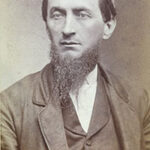 Henry Ritz Holsinger (1833 – 1905) was the spearhead of the progressive movement in the German Baptist Brethren who valued education, dissemination of information, and was “impatient with the passive, time-bound patterns of the past and eager to spur the church forward with energy and new ideas.”
Henry Ritz Holsinger (1833 – 1905) was the spearhead of the progressive movement in the German Baptist Brethren who valued education, dissemination of information, and was “impatient with the passive, time-bound patterns of the past and eager to spur the church forward with energy and new ideas.”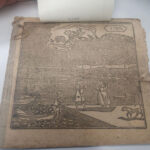 The impact of the Sauer Press on the early life of the colonial Germanic religions (including the Church of the Brethren) and people, focusing especially on Christopher Sauer I and II, shaped both the spiritual and political stance of a community and was integral to maintaining a growing church and Germanic cultural community in colonial America.
The impact of the Sauer Press on the early life of the colonial Germanic religions (including the Church of the Brethren) and people, focusing especially on Christopher Sauer I and II, shaped both the spiritual and political stance of a community and was integral to maintaining a growing church and Germanic cultural community in colonial America.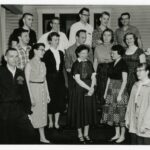 If one quote can truly define Dr. Gladdys E. Muir’s lifelong motto as a teacher and peace activist, it is one in which she wrote: “I have found it better to overestimate a student’s ability than to underrate him, for he usually rises to what you expect of him.”
If one quote can truly define Dr. Gladdys E. Muir’s lifelong motto as a teacher and peace activist, it is one in which she wrote: “I have found it better to overestimate a student’s ability than to underrate him, for he usually rises to what you expect of him.”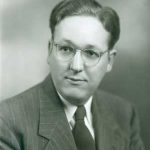 Those who have grown up within the Church of the Brethren may recall the name M. R. Zigler. He was a man who served as the first executive secretary of the Brethren Service Committee and a Brethren leader who helped to found Civilian Public Service during World War II. Another prominent individual, although perhaps lesser-known today, was Rev. W. Harold Row – a Church of the Brethren pastor in Virginia and Pennsylvania, denominational leader, and, along with Zigler, something of a Brethren pioneer in ecumenical, service-oriented relationships.
Those who have grown up within the Church of the Brethren may recall the name M. R. Zigler. He was a man who served as the first executive secretary of the Brethren Service Committee and a Brethren leader who helped to found Civilian Public Service during World War II. Another prominent individual, although perhaps lesser-known today, was Rev. W. Harold Row – a Church of the Brethren pastor in Virginia and Pennsylvania, denominational leader, and, along with Zigler, something of a Brethren pioneer in ecumenical, service-oriented relationships.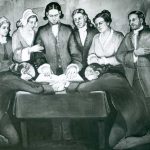 The tradition of plain dress is meant to intentionally separate from mainstream culture, emphasize commitment to the church and religious principles, and stress humility and honestly as virtues. A handful of religious movements in the United States require plain clothing as an indication of fellowship. The most notable groups are the Mennonites, Amish, Quakers, Hutterites, and Old Order Brethren—with accepted styles varying between each sect.
The tradition of plain dress is meant to intentionally separate from mainstream culture, emphasize commitment to the church and religious principles, and stress humility and honestly as virtues. A handful of religious movements in the United States require plain clothing as an indication of fellowship. The most notable groups are the Mennonites, Amish, Quakers, Hutterites, and Old Order Brethren—with accepted styles varying between each sect.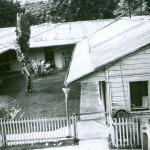 By Maddie McKeever This summer will mark the 75th anniversary of the first Heifer Project shipment to San Juan, Puerto Rico. Heifer Project was founded by Church of the Brethren member Dan West. After he had served overseas helping with relief work in Spain during the Spanish Civil War (1937-38), West realized that shipping dairy
By Maddie McKeever This summer will mark the 75th anniversary of the first Heifer Project shipment to San Juan, Puerto Rico. Heifer Project was founded by Church of the Brethren member Dan West. After he had served overseas helping with relief work in Spain during the Spanish Civil War (1937-38), West realized that shipping dairy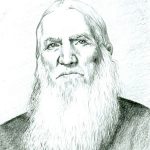 204 years ago (in 2019), a young man from Germany made his way to the United States. He was small of stature (indeed, his surname means “short” in German), and reportedly had a hump in his back. He was not a callus-handed farmer or a broad-shouldered laborer, but a classically educated school teacher. Like many
204 years ago (in 2019), a young man from Germany made his way to the United States. He was small of stature (indeed, his surname means “short” in German), and reportedly had a hump in his back. He was not a callus-handed farmer or a broad-shouldered laborer, but a classically educated school teacher. Like many By Haley Steinhilber, archival intern “I enjoy loving the hate out of people.” Rosa Page Welch1 Born into a family of Mississippi sharecroppers in 1900, Rosa Page Welch grew up immersed in the Christian faith. Her love of music was inspired by her father, who was a talented violinist and tenor in Claiborne County.2 She attended
By Haley Steinhilber, archival intern “I enjoy loving the hate out of people.” Rosa Page Welch1 Born into a family of Mississippi sharecroppers in 1900, Rosa Page Welch grew up immersed in the Christian faith. Her love of music was inspired by her father, who was a talented violinist and tenor in Claiborne County.2 She attended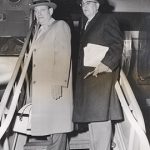 On March 13, 1958, Nathan Leopold was paroled from Statesville Penitentiary in Illinois into volunteer service work with the Brethren Service Commission in Castaner, Puerto Rico. He had formerly been imprisoned thirty-three years for his involvement in the 1924 murder of fourteen-year-old Bobby Franks.
On March 13, 1958, Nathan Leopold was paroled from Statesville Penitentiary in Illinois into volunteer service work with the Brethren Service Commission in Castaner, Puerto Rico. He had formerly been imprisoned thirty-three years for his involvement in the 1924 murder of fourteen-year-old Bobby Franks.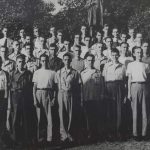 After the mistreatment of conscientious objectors by the military and government in World War I, peace groups such as the Mennonites, Society of Friends, and Church of the Brethren discussed the creation of a program that would exempt them from a future draft. Civilian Public Service was formed in 1940 as an alternative noncombatant way for conscientious objectors to serve the United States during World War II. Programs sponsored by CPS included work in agricultural service, mental hospital service, and numerous other projects supported both by the state and privately. The Brethren portion of the program was overseen by Brethren Service Committee.
After the mistreatment of conscientious objectors by the military and government in World War I, peace groups such as the Mennonites, Society of Friends, and Church of the Brethren discussed the creation of a program that would exempt them from a future draft. Civilian Public Service was formed in 1940 as an alternative noncombatant way for conscientious objectors to serve the United States during World War II. Programs sponsored by CPS included work in agricultural service, mental hospital service, and numerous other projects supported both by the state and privately. The Brethren portion of the program was overseen by Brethren Service Committee. Johannes Naas was born in the province of Westphalia, Germany around 1670. His defining feature was his height—he had a broad frame and stood a head taller than an average man1. Naas joined the Brethren congregation at Marienborn, where he served as a minister until persecution drove the Brethren to seek refuge in Krefeld2. In order to further spread the Brethren faith, Naas travelled the surrounding provinces with Jacob Preisz (Price)3. Abraham Cassel highlighted the incident that has become legend in his biography of Johann Naas. The story was later reiterated in the children’s book, The Tall Man.
Johannes Naas was born in the province of Westphalia, Germany around 1670. His defining feature was his height—he had a broad frame and stood a head taller than an average man1. Naas joined the Brethren congregation at Marienborn, where he served as a minister until persecution drove the Brethren to seek refuge in Krefeld2. In order to further spread the Brethren faith, Naas travelled the surrounding provinces with Jacob Preisz (Price)3. Abraham Cassel highlighted the incident that has become legend in his biography of Johann Naas. The story was later reiterated in the children’s book, The Tall Man.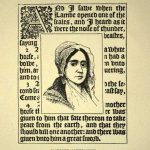 Unlike many women of her time, Harriet Livermore was born into a wealthy middle-class family with access to higher education. She never settled into a single denomination, but instead focused on the task to “restore the apostolic simplicity of the primitive church.” She followed no creed except what she deemed as “biblical truths” taken from the New Testament. 2 She was permitted to give sermons in many Protestant congregations during the 19th century, including meetinghouses of the Church of the Brethren where she established relationships with notable Brethren figures, such as Sarah Righter Major and Abraham Harley Cassel.
Unlike many women of her time, Harriet Livermore was born into a wealthy middle-class family with access to higher education. She never settled into a single denomination, but instead focused on the task to “restore the apostolic simplicity of the primitive church.” She followed no creed except what she deemed as “biblical truths” taken from the New Testament. 2 She was permitted to give sermons in many Protestant congregations during the 19th century, including meetinghouses of the Church of the Brethren where she established relationships with notable Brethren figures, such as Sarah Righter Major and Abraham Harley Cassel. Studebaker was a major American automobile manufacturer in the early to mid 20th century. The Studebaker brothers who founded the company were all raised as German Baptists, also known as Dunkers1 and later the Church of the Brethren. Their mother, Rebecca Mohler, was a member of the Ephrata community before she married John Clement Studebaker.
Studebaker was a major American automobile manufacturer in the early to mid 20th century. The Studebaker brothers who founded the company were all raised as German Baptists, also known as Dunkers1 and later the Church of the Brethren. Their mother, Rebecca Mohler, was a member of the Ephrata community before she married John Clement Studebaker.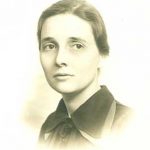 The date was March 27, 1941, eight months before the USA entered World War Two. The ZamZam was a rickety Egyptian freighter, sailing from New York bound for Alexandria by way of the Cape of Good Hope. On board were ambitious tobacco buyers, refugees from bomb-torn England, 136 missionaries and family members from 19 different faiths, a couple of dozen irreverent and high-spirited ambulance drivers, at least one noted scientist, and a motley multi-ethnic crew. The ZamZam took a zigzag course, running quietly so as to avoid running into any German commerce raiders.
The date was March 27, 1941, eight months before the USA entered World War Two. The ZamZam was a rickety Egyptian freighter, sailing from New York bound for Alexandria by way of the Cape of Good Hope. On board were ambitious tobacco buyers, refugees from bomb-torn England, 136 missionaries and family members from 19 different faiths, a couple of dozen irreverent and high-spirited ambulance drivers, at least one noted scientist, and a motley multi-ethnic crew. The ZamZam took a zigzag course, running quietly so as to avoid running into any German commerce raiders.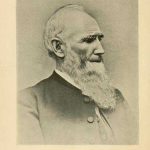 By William Kostlevy Few dates in Church of the Brethren history are more important than February 1, 1816 for that is the date of the birth of James Quinter. The son of a day laborer, Quinter was raised in poverty and after his father’s untimely death became the sole supporter of a family of 4.
By William Kostlevy Few dates in Church of the Brethren history are more important than February 1, 1816 for that is the date of the birth of James Quinter. The son of a day laborer, Quinter was raised in poverty and after his father’s untimely death became the sole supporter of a family of 4.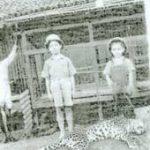 This past summer Warren Garner donated letters to BHLA that were written between his parents and his mother to her parents. These letters were written while the Garner family was living in India, and the letters were written while the Garner family was Church of the Brethren Missionaries in India. By the time the Garners arrived in India the Church of the Brethren already had a history of mission work in India. The Church started here in 1895 and continued until the Church of the Brethren in India became an independent church. The Garner family was in India from 1916 until 1932, and these family letters give us the chance to see the mission field through a different lens.
This past summer Warren Garner donated letters to BHLA that were written between his parents and his mother to her parents. These letters were written while the Garner family was living in India, and the letters were written while the Garner family was Church of the Brethren Missionaries in India. By the time the Garners arrived in India the Church of the Brethren already had a history of mission work in India. The Church started here in 1895 and continued until the Church of the Brethren in India became an independent church. The Garner family was in India from 1916 until 1932, and these family letters give us the chance to see the mission field through a different lens.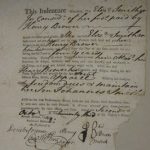 Hubert and Anna Brower, and their three sons and a daughter, were Mennonites from the small hamlet of Fuss Gonheim, just across the Rhine River from Mannheim, in the Palatinate. They were part of a Swiss-German Mennonite community who fled Switzerland under persecution, and who then fled Germany seeking religious freedom in William Penn’s colony of Pennsylvania.
Hubert and Anna Brower, and their three sons and a daughter, were Mennonites from the small hamlet of Fuss Gonheim, just across the Rhine River from Mannheim, in the Palatinate. They were part of a Swiss-German Mennonite community who fled Switzerland under persecution, and who then fled Germany seeking religious freedom in William Penn’s colony of Pennsylvania.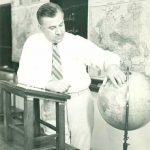 Andrew Cordier did many great things in his life, but not many people recognize his name. An article about Cordier that was published in the year 1995 in the Church of the Brethren magazine Messenger said this about Cordier. “He wasn’t one of the eight Brethren ‘saints’ portrayed as call claimers at the recent Charlotte Annual Conference. He has never been romanticized like Dan West, M. R. Zigler, or Anna Mow. Many Brethren today don’t even recognize his name. But Andrew W. Cordier deserves a place in the Brethren pantheon.”1 Cordier did many things for the world; the major one was his role in the founding of the United Nations, an organization that continues to have effects on the world today. Sadly, his name has slipped into obscurity. It is time that the name Andrew Cordier came back into the history books, and the world should thank this great man from Canton, Ohio.
Andrew Cordier did many great things in his life, but not many people recognize his name. An article about Cordier that was published in the year 1995 in the Church of the Brethren magazine Messenger said this about Cordier. “He wasn’t one of the eight Brethren ‘saints’ portrayed as call claimers at the recent Charlotte Annual Conference. He has never been romanticized like Dan West, M. R. Zigler, or Anna Mow. Many Brethren today don’t even recognize his name. But Andrew W. Cordier deserves a place in the Brethren pantheon.”1 Cordier did many things for the world; the major one was his role in the founding of the United Nations, an organization that continues to have effects on the world today. Sadly, his name has slipped into obscurity. It is time that the name Andrew Cordier came back into the history books, and the world should thank this great man from Canton, Ohio.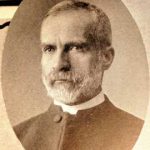 While the entrance of the United States into World War I in 1917 challenged the very beliefs of the young Brethren men caught up in the draft, the war also challenged the leadership of the Church of the Brethren. During the war the church faced two major challenges. The first was how to inform the government and the public about Brethren beliefs while also demonstrating patriotism. Second was how to best serve and strengthen the Brethren men called into military service. This second challenge served as a complex and difficult issue for church leadership.
While the entrance of the United States into World War I in 1917 challenged the very beliefs of the young Brethren men caught up in the draft, the war also challenged the leadership of the Church of the Brethren. During the war the church faced two major challenges. The first was how to inform the government and the public about Brethren beliefs while also demonstrating patriotism. Second was how to best serve and strengthen the Brethren men called into military service. This second challenge served as a complex and difficult issue for church leadership.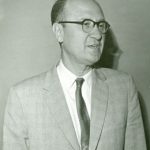 Politics and political involvement has, at times, presented various issues and challenges to the Church of the Brethren. How involved could a Brethren become in the political process while remain true to their faith? If the government used force and fought wars, should the Brethren hold any governmental office or even vote? The answers to this question have changed over time from the beginning of the Brethren to the present day.
Politics and political involvement has, at times, presented various issues and challenges to the Church of the Brethren. How involved could a Brethren become in the political process while remain true to their faith? If the government used force and fought wars, should the Brethren hold any governmental office or even vote? The answers to this question have changed over time from the beginning of the Brethren to the present day.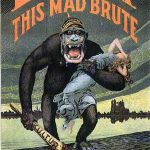 When the United States entered into World War I in April 1917, the Church of the Brethren faced a significant challenge to their peace witness. The traditional Brethren peace position placed them in opposition to American society’s definition of patriotism as doing everything possible to support the war (including fighting in Europe, buying war bonds, supporting the Red Cross, etc). How could they remain true to their peace position during a time of national war hysteria? Could they hold to their nonresistance while still demonstrating their loyalty to the United State? Nowhere was this challenge more prominent than for those Brethren in military camps following the beginning of the draft in June 1917.
When the United States entered into World War I in April 1917, the Church of the Brethren faced a significant challenge to their peace witness. The traditional Brethren peace position placed them in opposition to American society’s definition of patriotism as doing everything possible to support the war (including fighting in Europe, buying war bonds, supporting the Red Cross, etc). How could they remain true to their peace position during a time of national war hysteria? Could they hold to their nonresistance while still demonstrating their loyalty to the United State? Nowhere was this challenge more prominent than for those Brethren in military camps following the beginning of the draft in June 1917.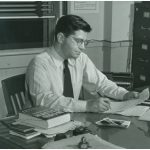 Even if you don’t recognize his name, you’ve probably sung Ken Morse’s Move in our Midst. Kenneth Ivan Morse was the son of Herman V. and Sadie Bennett Morse, born 1913 in Altoona, PA. He grew up in the Altoona congregation and graduated from Juniata College and Pennsylvania State University with a Masters in English Literature.
Even if you don’t recognize his name, you’ve probably sung Ken Morse’s Move in our Midst. Kenneth Ivan Morse was the son of Herman V. and Sadie Bennett Morse, born 1913 in Altoona, PA. He grew up in the Altoona congregation and graduated from Juniata College and Pennsylvania State University with a Masters in English Literature.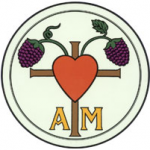 Everyone in the Church of the Brethren knows the name Alexander Mack. His legacy is one of the pillars of the Brethren identity, and any member can give at least a bare-bones recital of the first Brethren baptism in the Eder River. Much less well known is the story of his eldest son, Alexander Mack, Jr., whose 300th birthday was just recently commemorated by the Young Center with a conference titled “Pietist and Anabaptist Intersections in Pennsylvania: The Life and Influence of Alexander Mack Jr.” held June 6-8th this year. Mack Jr.’s lack of significant recognition stands in stark contrast to the many contributions he made to the early church, and it would not be unrealistic to say that he was the first unsung hero of the Brethren.
Everyone in the Church of the Brethren knows the name Alexander Mack. His legacy is one of the pillars of the Brethren identity, and any member can give at least a bare-bones recital of the first Brethren baptism in the Eder River. Much less well known is the story of his eldest son, Alexander Mack, Jr., whose 300th birthday was just recently commemorated by the Young Center with a conference titled “Pietist and Anabaptist Intersections in Pennsylvania: The Life and Influence of Alexander Mack Jr.” held June 6-8th this year. Mack Jr.’s lack of significant recognition stands in stark contrast to the many contributions he made to the early church, and it would not be unrealistic to say that he was the first unsung hero of the Brethren.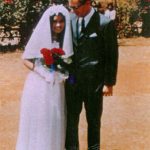 After the publication of the last Hidden Gems post on Ted Studebaker, and the accompanying article in eBrethren, the inboxes at the General Offices quickly become inundated with variations of the same question: “What happened to Ven Pak Studebaker?” This is her story.
After the publication of the last Hidden Gems post on Ted Studebaker, and the accompanying article in eBrethren, the inboxes at the General Offices quickly become inundated with variations of the same question: “What happened to Ven Pak Studebaker?” This is her story.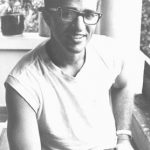 It may be unfair to say Ted Studebaker is a “hidden gem.” In the Church of the Brethren, anyway, he is a something of a legend. At the time of his death, Ted’s story even warranted a spot on the ABC news. He was anything but unknown. Still, as time passes and the wars of the last century become more and more distant in the cultural memory, it seems important to revisit the service of a man whose philosophy seems more relevant than ever in our conflict-ridden world.
It may be unfair to say Ted Studebaker is a “hidden gem.” In the Church of the Brethren, anyway, he is a something of a legend. At the time of his death, Ted’s story even warranted a spot on the ABC news. He was anything but unknown. Still, as time passes and the wars of the last century become more and more distant in the cultural memory, it seems important to revisit the service of a man whose philosophy seems more relevant than ever in our conflict-ridden world.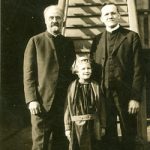 A few weeks ago, the BHLA received a rather unique donation: The personal family photo album of Ernestine Hoff Emrick, granddaughter of Emanuel B. Hoff. If that name rings a bell, it is likely because E.B. Hoff, along with A.C. Wieand, founded the school that would become Bethany Theological Seminary in 1905.
A few weeks ago, the BHLA received a rather unique donation: The personal family photo album of Ernestine Hoff Emrick, granddaughter of Emanuel B. Hoff. If that name rings a bell, it is likely because E.B. Hoff, along with A.C. Wieand, founded the school that would become Bethany Theological Seminary in 1905.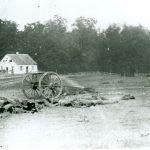 The Brethren Historical Library and Archives (BHLA) recently acquired the papers of The Rev. H. Austin Cooper (1911-1999) from his son, Larry C. Cooper, of Landenberg, PA. The Rev. Cooper was a well-known Church of the Brethren minister who served congregations in Illinois, Ohio, Maryland, Pennsylvania, and Virginia. A fine historian, he authored four books and various other publications.
The Brethren Historical Library and Archives (BHLA) recently acquired the papers of The Rev. H. Austin Cooper (1911-1999) from his son, Larry C. Cooper, of Landenberg, PA. The Rev. Cooper was a well-known Church of the Brethren minister who served congregations in Illinois, Ohio, Maryland, Pennsylvania, and Virginia. A fine historian, he authored four books and various other publications.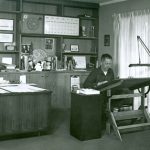 Recently, the BHLA received several boxes of records from the Brethren Service Center in New Windsor, MD. A large portion of these records originated with the now defunct Brethren Service Center in Modesto, CA. Among the usual photographs of the center and its activities lay one of Charles Schulz, the creator of the comic strip Peanuts.
Recently, the BHLA received several boxes of records from the Brethren Service Center in New Windsor, MD. A large portion of these records originated with the now defunct Brethren Service Center in Modesto, CA. Among the usual photographs of the center and its activities lay one of Charles Schulz, the creator of the comic strip Peanuts.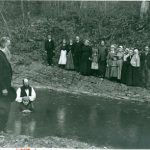 Here are several photographic images of Church of the Brethren baptisms in the early 1900s. All are from the photographic collection of the Brethren Historical Library and Archives. Each minister baptizing was either already an elder or became one during the course of their ministry. The eldership was officially abolished by the Church of the Brethren in 1967.
Here are several photographic images of Church of the Brethren baptisms in the early 1900s. All are from the photographic collection of the Brethren Historical Library and Archives. Each minister baptizing was either already an elder or became one during the course of their ministry. The eldership was officially abolished by the Church of the Brethren in 1967.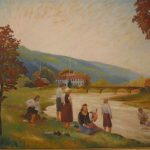 Following are some images related to Alexander Mack, Sr. (1679-1735), founder and first minister of the Church of the Brethren and related Brethren bodies, which the general reader may not have seen and which may be of interest.
Following are some images related to Alexander Mack, Sr. (1679-1735), founder and first minister of the Church of the Brethren and related Brethren bodies, which the general reader may not have seen and which may be of interest.